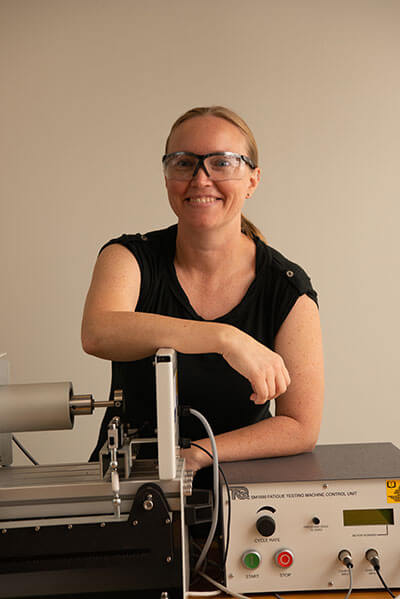June 15, 2020
In response to the coronavirus pandemic, the St. Mary’s University community has adapted — faculty stepping up to deliver quality education to students from a distance.

Amber McClung, Ph.D., Associate Professor of Mechanical Engineering, shared takeaways from her spring classes in a Q&A. McClung joined St. Mary’s in 2012. She specializes in the mechanics of materials and structures, which include dynamics, materials science, aerospace structures and experimental methods. In Spring 2020, she taught Materials Science, Aerospace Structures, and Seminars in Biological Sciences.
Q: What was your approach in switching to online learning in a short period of time?
A: My approach was to take things one step at a time and to keep my students’ well-being as the top priority. I had used technology before and had even flipped a classroom (i.e., made it online) in the past, so I had some basic skills to draw on to make the transition to online learning.
Q: What are some new teaching methods you’ve picked up along the way?
A: I have learned a lot about Zoom (a cloud-based videoconferencing platform) along the way and am getting a lot better with my handwriting using a stylus and a tablet.
I am starting the certification for online teaching right now, and am reading a lot about how to foster engagement with a classroom with mixed attendance modes (some in person, some online), so I expect to have a much longer list of new tricks before classes start in the fall.
Q: What has been your biggest area or opportunity for growth in teaching online thus far?
A: I am used to being able to connect easily with students in the physical classroom. I am still trying to figure out how to reliably establish that quality connection online. I have been talking with colleagues and we are brainstorming ways to encourage mixed groups of student participation. For example, since we are offering a flexible format for classes in the fall, how do we achieve equitable participation for students in the classroom and online? My overarching plan with this is to create ice-breaker events in each class and the beginning of the semester to help my students get to know each other and then to embed activities throughout the semester that include and require participation from them regardless of their chosen format for accessing the class.
Q: What has been most surprising?
A: I did not have a reason to think about connectivity before. It was a surprise at first that we could not all just plan to connect online and be able to all make it 100% all at the same time.
Q: What has been the most beneficial experience of teaching online?
A: This disruption in our normal way of conducting life forces us to adapt and change. And the ability to adapt and change is so important in life. This is a great opportunity to learn new tools and skills.
One of the areas that I have learned more about so far is well-being. In trying to find resources to help educate students on how to take care of themselves in this time of stress, I have learned new concepts about well-being that I didn’t know existed. For instance, I did not know that there are six different dimensions to personal wellness, according to the National Wellness Institute: spiritual, emotional, occupational, physical, social and intellectual. This has helped me to reflect inward as well and work to live my life in an even more meaningful way.
Q: Students look to you for guidance, for wisdom, especially during times of crisis. How have you managed your own challenges and anxieties during this time?
A: I have been taking more time to take care of myself. I have been bicycling with my kids, cooking more fresh meals and gardening. When things start to get to intense, I take a deep breath and think about how grateful I am to be part of a community that is so strong.
